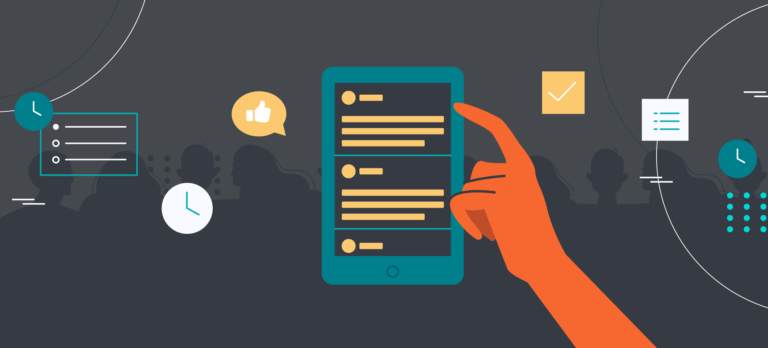This is a guest post by Cassandra Clark, Senior Marketing Manager at LinkedIn.
Following event marketing best practices is smart. But every event is unique, and every marketing campaign is different. That’s where A/B testing comes in.
At LinkedIn, we think of testing as “The Goldilocks Effect.” If your campaign is too hot or too cold, it will flop. And you won’t know until you “taste the porridge.”
When we promote our own internal B2B events, we always test our promotional strategies. And by doing so, we’ve learned some interesting things about how to use LinkedIn’s advertising tools to promote our events. Of course, you should test your own campaigns to see how your particular porridge is heating up, but these findings are a good start.
Experiment #1: Send messages from a person rather than a company
The question: Would people be more apt to open an InMail message from a company or a specific person — even if they didn’t personally know that person?
The test: The LinkedIn events team A/B tested sending Sponsored InMail messages from “LinkedIn” versus a specific team member.
The results: The InMail messages from the team member scored a 16% higher open rate and 10% higher conversion rate.
The takeaway: Personalisation is key. People are more apt to open messages if they’re from a real person versus a company. You can test sending your own InMail from your own name, the name of a Sales team member, and (with permission) a company executive. And don’t forget to personalize the recipient’s first name in your message as well.
Experiment #2: Target by job function versus job title
The question: Is it more effective to target by job function or job title?
The test: Targeting is LinkedIn’s bread and butter. If you purchase a list of leads, you’re never sure if it’s accurate or up to date. But with LinkedIn’s targeting, you know it is.
For B2B marketers, the strength of LinkedIn’s data, combined with the granular targeting capabilities, make it possible to target very specific audiences. For this A/B test, we compared results from Sponsored Content targeted by job function versus job title.
The results: Job function won. While targeting by job title is more specific, we found that we were missing out on a lot of quality people, limiting our reach potential. We found that using job function instead of job titles to target, expanded our reach, without sacrificing quality.
The takeaway: Targeting by job function can help you reach more people while still maintaining strong conversion rates.
Experiment #3: Use InMail to boost email efforts
The question: Is Sponsored InMail an effective way to boost email marketing efforts?
The test: For a recent webinar targeting executives, LinkedIn saw a disappointing open rate using traditional email marketing. So the team tested sending InMail messages to the exact same audience using LinkedIn’s Matched Audiences functionality.
The results: The Sponsored InMail campaign achieved a 50% open rate and a healthy number of registrations. Beyond this one test, we’ve seen InMails aimed at executives result in open rates as high as 67%.
It’s different to email because you know they’ll get the message, and you don’t have to worry about inaccurate email addresses. There’s no bounce rate.
Experiment #4: Combine ad techniques to increase responses
The question: What about combining promotional methods on LinkedIn? Would the effect be additional or exponential?
The test: The LinkedIn event team tested using Sponsored Content and Sponsored InMail together within a single marketing campaign.
The results: Using Sponsored Content in tandem with Sponsored InMail resulted in a 25% increase in InMail open rates — and a 95% increase in click-through rates.
The takeaway: Sponsored Content tends to work really well as a brand awareness move. You’re letting people know your event is happening. Sponsored InMail is a more personal tactic. You’re directly asking people to register. They work well together because if people are already intrigued by your event or aware of your brand, they’ll be more likely to respond to these personal touches.
These four experiments offer up some general insight into the best ways to run your B2B event marketing campaigns on LinkedIn. But always make sure you’re monitoring your performance in real-time using your registration platform’s reporting.
Want to turn the LinkedIn team’s insights into action? Get started here. Or, to learn more insights from the LinkedIn marketing team, download Promote Your Event on LinkedIn: Inside Tips From the LinkedIn Team.




